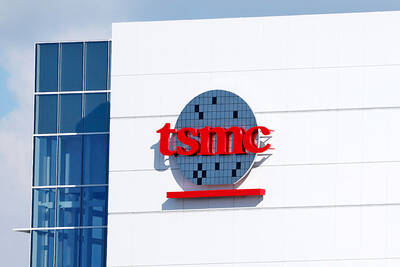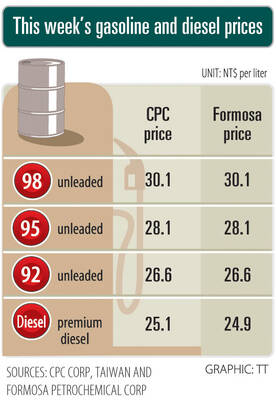The actual effectiveness of vibration-dampening measures for the north-south high-speed rail near the Tainan Science-based Industrial Park (台南科學園區) can't be known until the railway is up and running, a National Science Council official said.
According to local media reports, the unnamed official said that while standards for the project have been based on simulations, whether or not the measures the council is proposing will meet expectations cannot be fully known until the railway is operational.
The council will publicize the details of the project, which could include building vibration-dampening trenches between the railway and high-tech manufacturing operations, the reports said. Companies interested in the project can begin submitting bids next month, according to the reports.
The railway, which is being built at a cost of NT$446 billion under a build-operate-transfer model, will link Taipei and Kaohsiung, with some other stops.
The Taiwan High Speed Rail Corp (
Last June, Taiwan High Speed agreed to change the design of the elevated track that runs through the park.
The council is blame for the problem since planning for the park began well after the route of the train was established. As a result, the council constructed a mock viaduct to simulate the path the train will take through the park and has run tests to evaluate what responses it can take to reduce the impact of the passing train, the reports said.
The council's mishandling of the issue was reinforced during the dispute when it urged the railway to restrict vibration levels to 36 decibels (dbs). The figure was considered to be absurd since background noise had already been measured at 48dbs at the site when it was still just a rice paddy.
A US Federal Railway Administration reported in a 1998 study that strengthening the foundations of buildings in areas nearby the railway could effectively reduce vibrations, while the placement of insulated trenches between the railway and neighboring structures could also reduce vibrations.
Taiwan Semiconductor Manu-facturing Co (

Real estate agent and property developer JSL Construction & Development Co (愛山林) led the average compensation rankings among companies listed on the Taiwan Stock Exchange (TWSE) last year, while contract chipmaker Taiwan Semiconductor Manufacturing Co (TSMC, 台積電) finished 14th. JSL Construction paid its employees total average compensation of NT$4.78 million (US$159,701), down 13.5 percent from a year earlier, but still ahead of the most profitable listed tech giants, including TSMC, TWSE data showed. Last year, the average compensation (which includes salary, overtime, bonuses and allowances) paid by TSMC rose 21.6 percent to reach about NT$3.33 million, lifting its ranking by 10 notches

SEASONAL WEAKNESS: The combined revenue of the top 10 foundries fell 5.4%, but rush orders and China’s subsidies partially offset slowing demand Taiwan Semiconductor Manufacturing Co (TSMC, 台積電) further solidified its dominance in the global wafer foundry business in the first quarter of this year, remaining far ahead of its closest rival, Samsung Electronics Co, TrendForce Corp (集邦科技) said yesterday. TSMC posted US$25.52 billion in sales in the January-to-March period, down 5 percent from the previous quarter, but its market share rose from 67.1 percent the previous quarter to 67.6 percent, TrendForce said in a report. While smartphone-related wafer shipments declined in the first quarter due to seasonal factors, solid demand for artificial intelligence (AI) and high-performance computing (HPC) devices and urgent TV-related orders

Prices of gasoline and diesel products at domestic fuel stations are this week to rise NT$0.2 and NT$0.3 per liter respectively, after international crude oil prices increased last week, CPC Corp, Taiwan (台灣中油) and Formosa Petrochemical Corp (台塑石化) said yesterday. International crude oil prices last week snapped a two-week losing streak as the geopolitical situation between Russia and Ukraine turned increasingly tense, CPC said in a statement. News that some oil production facilities in Alberta, Canada, were shut down due to wildfires and that US-Iran nuclear talks made no progress also helped push oil prices to a significant weekly gain, Formosa said

MINERAL DIPLOMACY: The Chinese commerce ministry said it approved applications for the export of rare earths in a move that could help ease US-China trade tensions Chinese Vice Premier He Lifeng (何立峰) is today to meet a US delegation for talks in the UK, Beijing announced on Saturday amid a fragile truce in the trade dispute between the two powers. He is to visit the UK from yesterday to Friday at the invitation of the British government, the Chinese Ministry of Foreign Affairs said in a statement. He and US representatives are to cochair the first meeting of the US-China economic and trade consultation mechanism, it said. US President Donald Trump on Friday announced that a new round of trade talks with China would start in London beginning today,